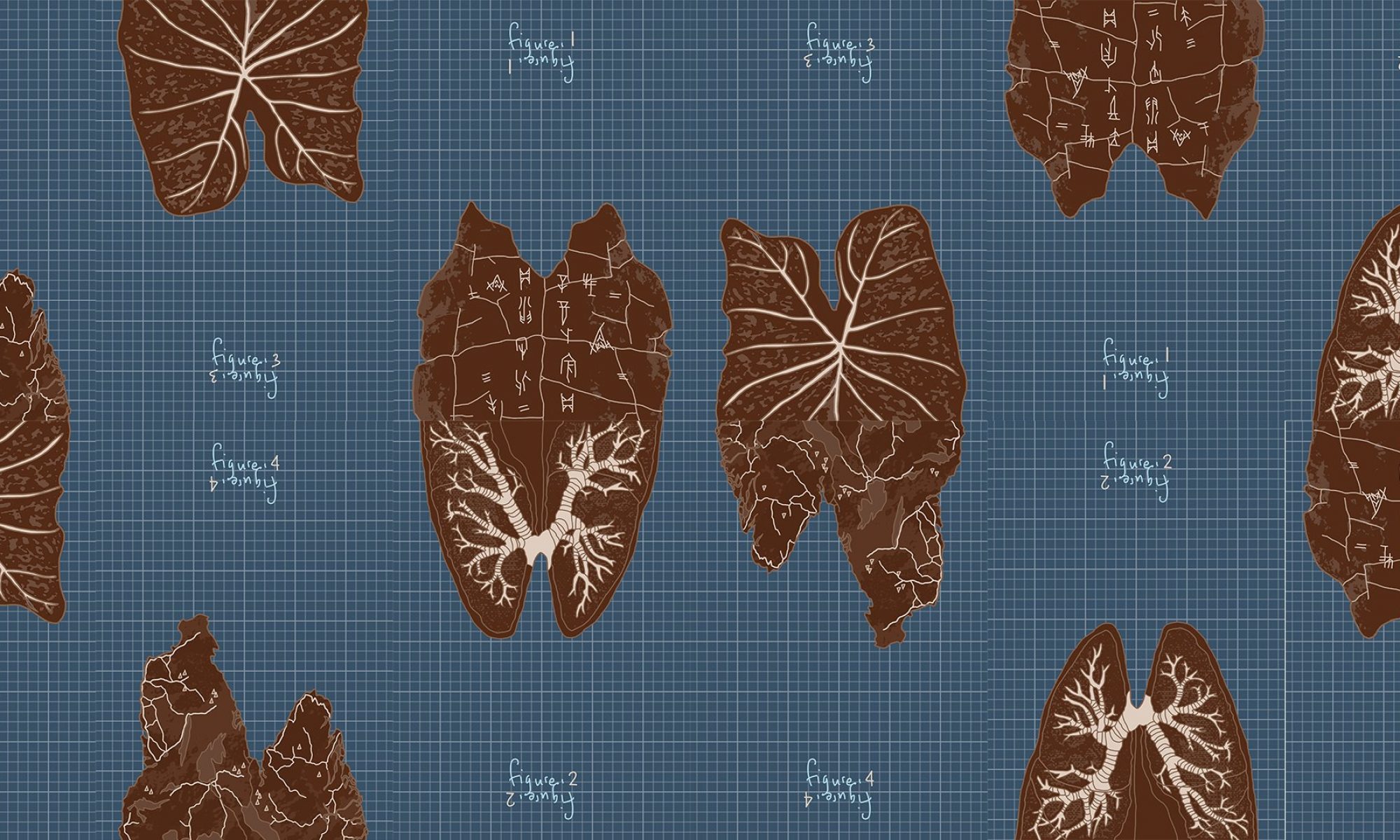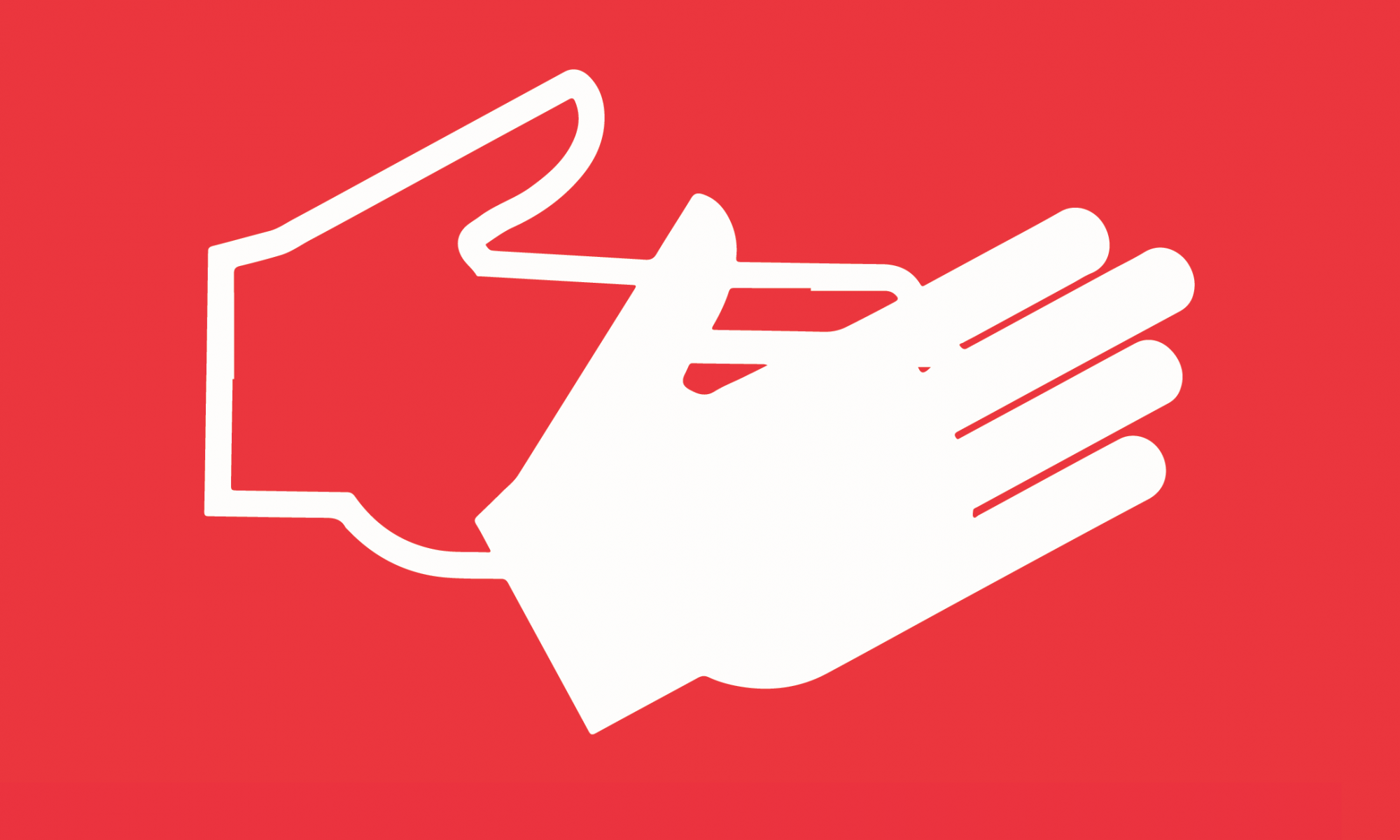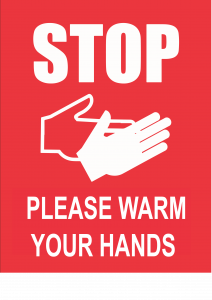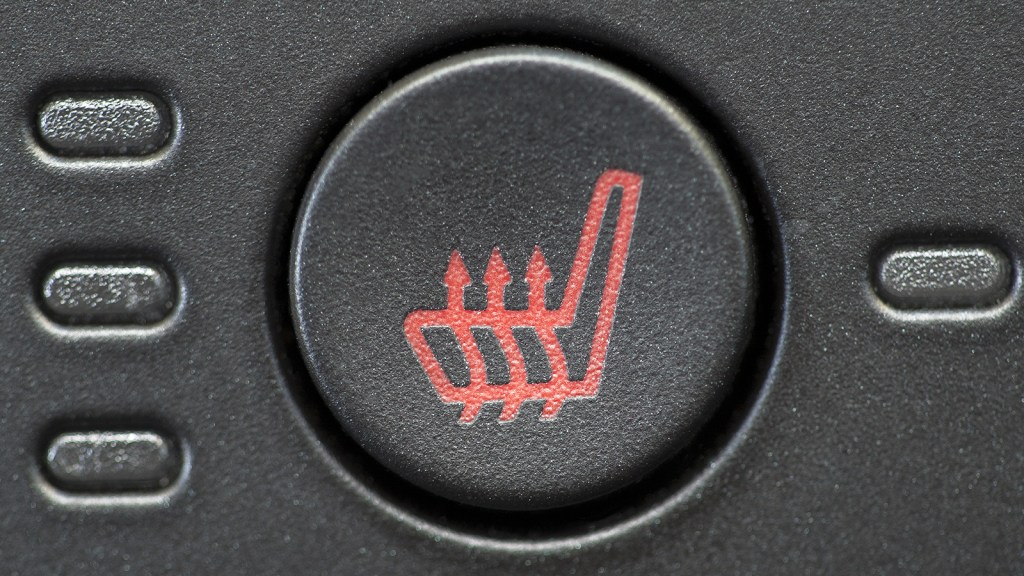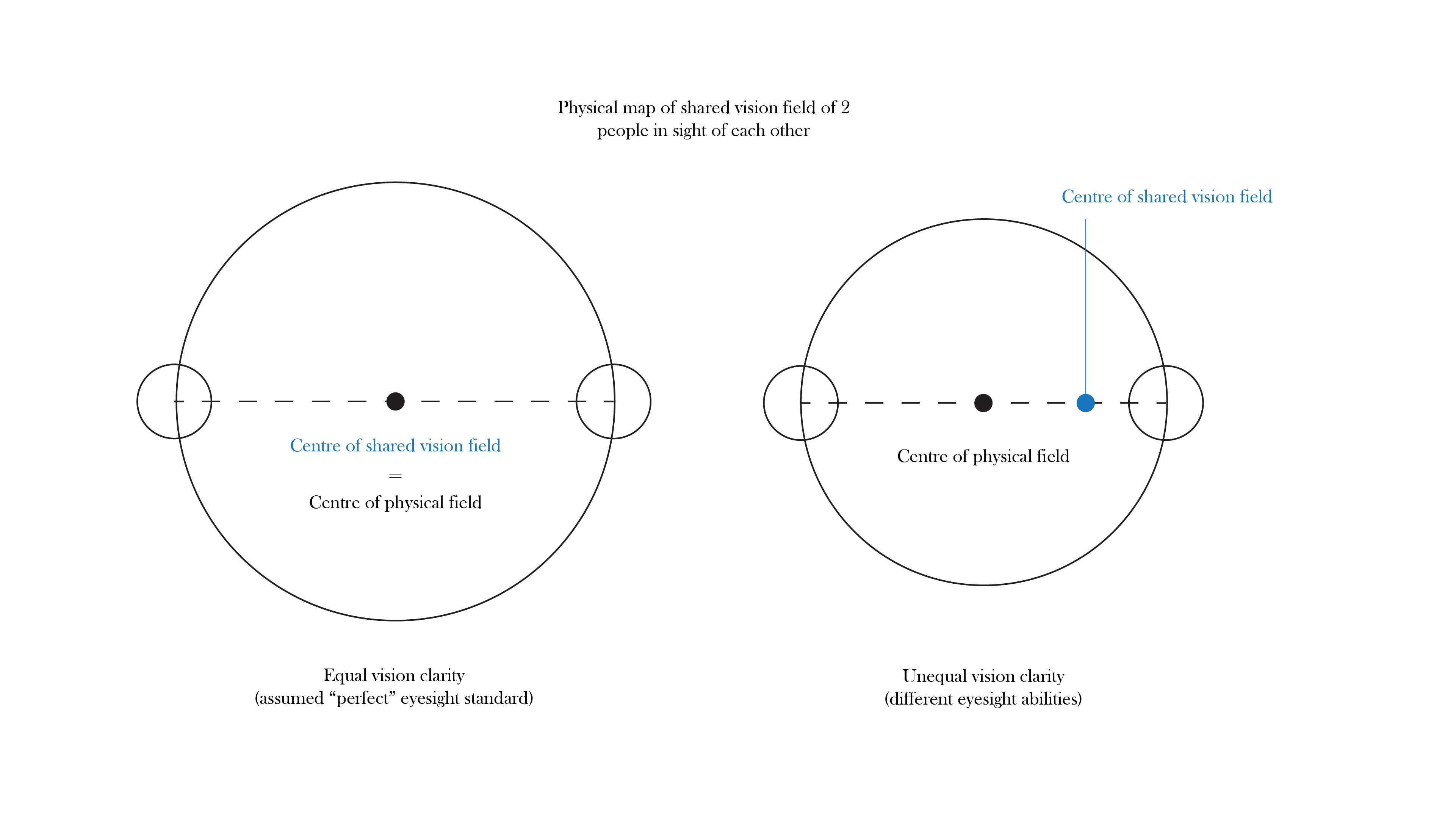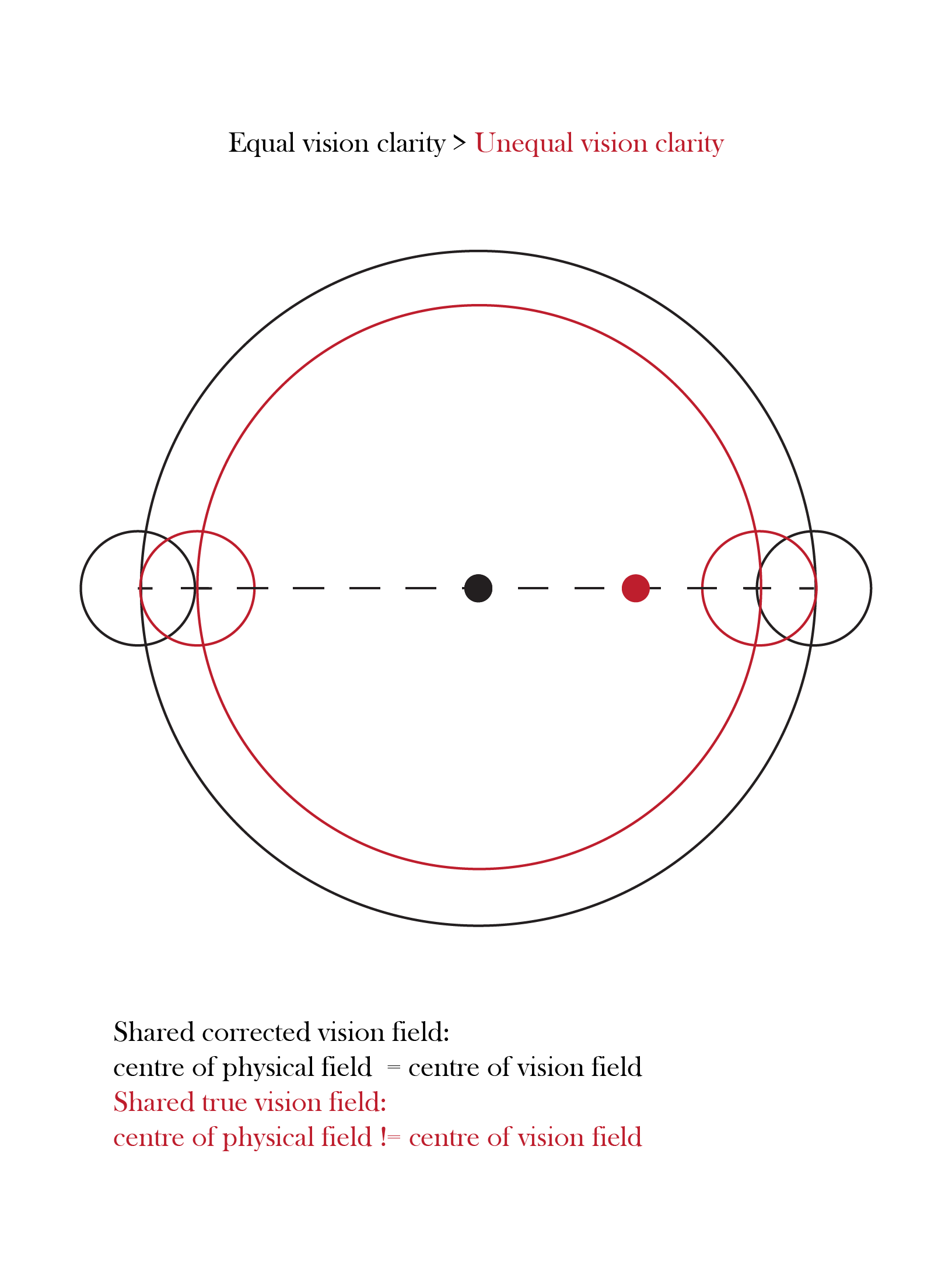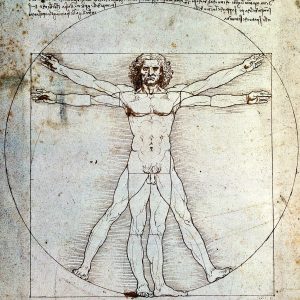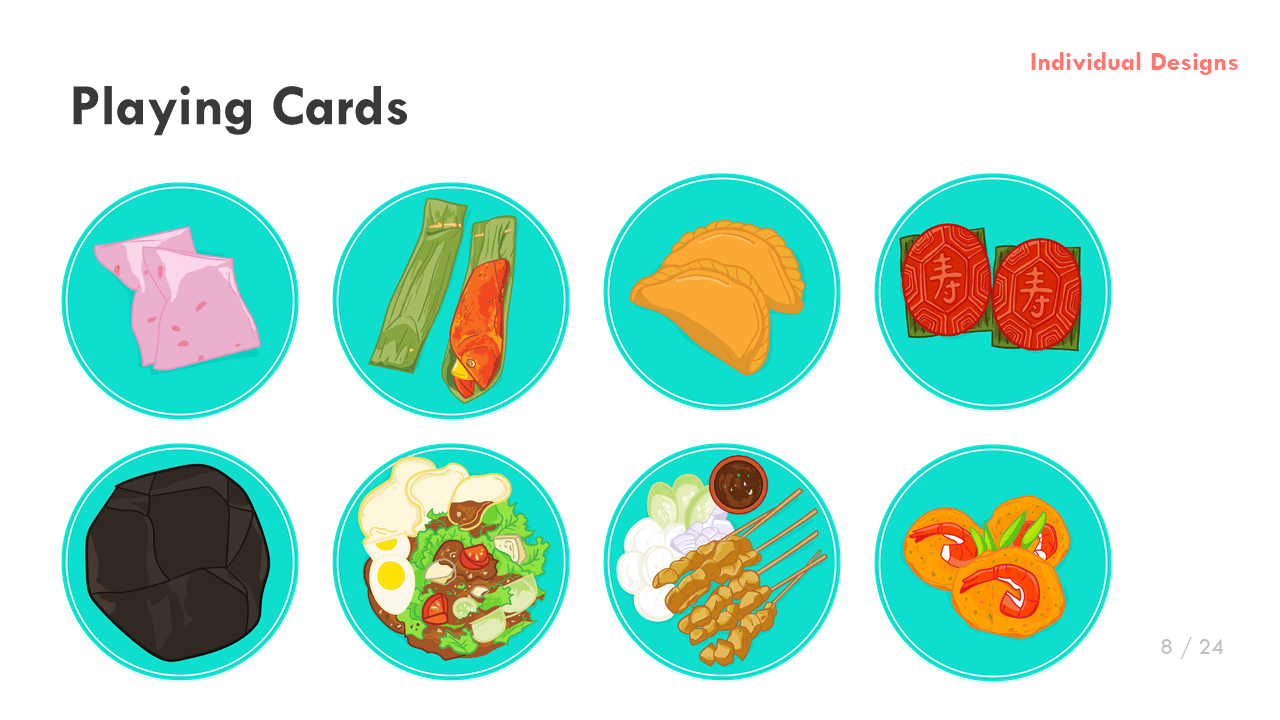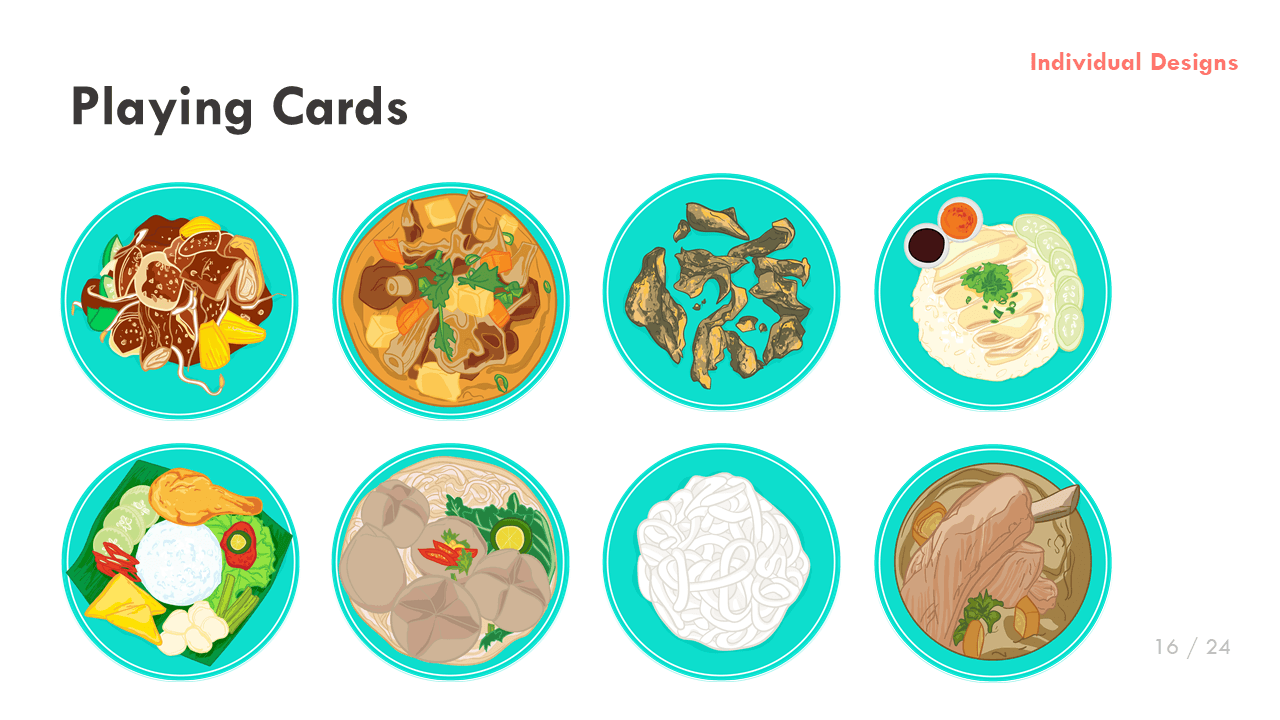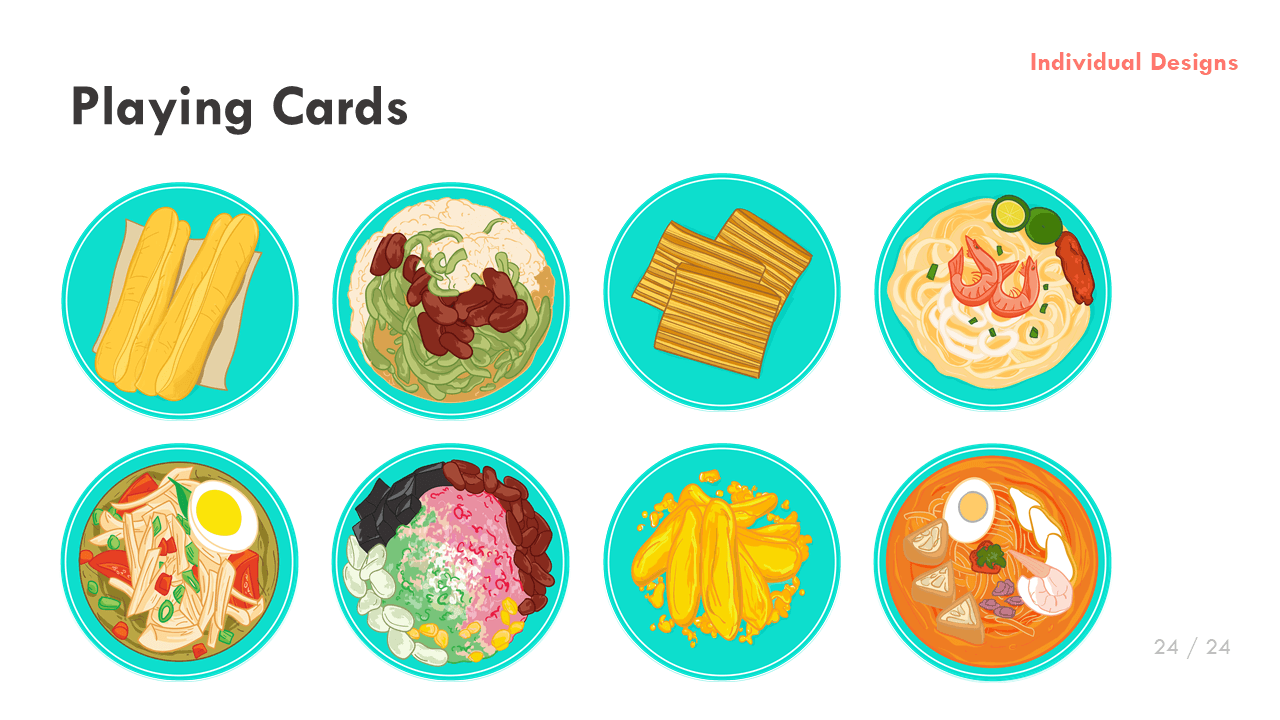WARM-UP THE NEW NORMAL
PLEASE WARM YOUR HANDS
Many of us had difficulties adjusting to the new normal as we found ourselves suddenly held to a whole slew of restrictions. Safe-distancing measures place crosses between us, discourage us from talking to each other and gathering in large groups. They challenge our ideas of proximity and relationships altogether and seem to make society a lot more colder.
This installation hopes to help users warm up to the new normal and its visual lexicon of tapes and crosses, by offering a new means of connecting and feeling each other in spaces simultaneously shared and divided. The super conductive ADM uncommon table aims to help users remember the feeling of warmth transmitted by the touch of another human’s hand, even while practising safe-distancing. Users are encouraged to make a no-contact heat pass to share their warmth with others across the table – all while keeping their hands to themselves.
If cold to touch, invite someone else to share the space and warm up with. Just don’t feel too lonely when touch becomes cold again.
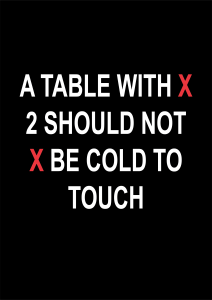


FINAL DOCUMENTATION
(Photos and videos here)
PROJECT DEVELOPMENT
Early Idea –
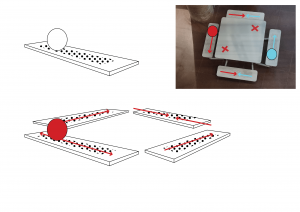
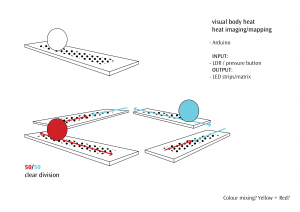
I started with the idea of visualising body heat and mapping out its shared field and paths between 2 people in space, reflecting on these questions:
- How can we feel each other in a shared space while apart?
- How can feeling each other encourage us to not only acknowledge but interact with each other?
- How do we mark personal territories & occupy spaces as our own?
- How do we navigate sharing these spaces with others?
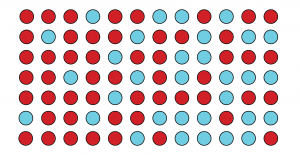
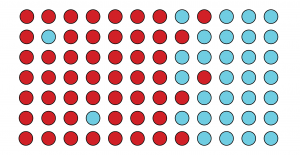
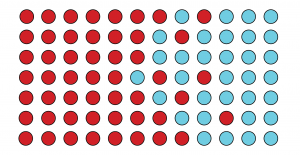
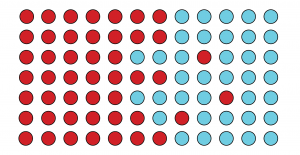
/POST-MIDSEM/
Iteration I –
HARDWARE: LDR (sensor measuring light) Heating pads + MOFSET semiconductor for temp control LED strips Arduino 5V power supply SOFTWARE: LDR code with threshold value Heating pad + MOFSET code LED code for fade + intensity changes
Interaction:
- If user 1 activates button, user 2 heating pad heats up, LED lights up
- If both users activate button, both users have heating pads and LED lights activated
- If no users activate buttons, both heating pads cool, no LED lights
- The longer the duration of contact/stay, the hotter the heating pads (sufficient to achieve via normal heat conducting mechanisms without need to manipulate software code)
I had to experiment a bit and do some calculations to decide what power supply to use for my circuit as I needed to connect 2 heating pads, 2 LED strips and an arduino to the same supply, while meeting their different power ratings and voltage needs. I tried: Li-Po batteries, cell batteries, open bank, DC adaptors of different capacities. As I am relatively inexperienced with electronics, learning all the hardware and circuitry was slightly challenging but a good learning experience from this project.
Iteration II –
HARDWARE CHANGES: LDR (sensor measuring light)-> DIY soft button (measure electric contact) LDR readings unreliable for input due to close position with LED lights in set-up SOFTWARE CHANGES: LED code runs to pulse continuously at different light intensities for 1/2-person interaction
After consultation, I decided that I would adjust my interaction to focus on lights only to convey the idea of heat visually and play with the intensity and the way they pulsed when 0/1/2 people activated the buttons. I wanted to remove heat entirely because I felt that the adafruit heating pad I tested generated an underwhelming max temp of heat that might let down users’ expectations.
FINAL Iteration –
HARDWARE CHANGES: Adafruit heating pad -> Stripped commercial heating pads Technical experiments for INPUT: ways of combining resistors to improve contact and sensitivity of sensors SOFTWARE CHANGES: Normal ButtonPIN code for DIY soft button -> Using Capacitive Touch Arduino library to improve sensitivity Subtle differences to LED code to make 2-people interaction activate brighter lights than 1-person only PHYSICAL SET-UP MATERIALS: Cover for heating pad button: black/red/metallic > Black was most suited to contrast the states of the table activated with and without light > Black blended well with the table so users focused on feeling the heat VS visuals > Metallic sheen had conductive associations but was distracting to view, took away from heat feeling focus > Red suggested heat all the time VS cool surface Black cloth/felt VS foam VS cellophane paper > Cellophane paper worked best to gain/lose heat from the heating pad under and blended with the table set-up > Cloth and felt were too tactile and captured heat too (lost heat more poorly)
I switched out the adafruit heating pad with heating pads stripped from a commercial product. The maximum temperature reached by these heating pads were still not impressive but their rate of heating and cooling was much higher so the presence/absence of a second person activating the heating pad could be felt more instantaneously. I decided that I would stick to the objective of making heat the main output of my interaction.
My original concern was that the low temperature of the heating pads were defeating to include if they fell short of people’s expectations in their temperature. However while testing the set-up, I realised that the expectation of the pads heating up, combined with the subtlety of the heat generated, actually produced a yearning to feel the “heat from the other person” instead, where I pressed down harder on the pad and focused more on feeling for the heat. The warmth generated is also comforting to the touch and of an appropriate temperature to suggest the warmth of hands. I felt this was more aligned with the concept of my work, versus my first idea to amplify the sensation of heat generated beyond body temperature (boiling) as the heating pads were activated for a longer time. In that iteration, I am creating a new sensation and unfamiliar mode of communication between people via heat, whereas here I am trying to recreate and remind users of the sensation of sharing bodily warmth – that might be forgotten with safe-distancing measures being enforced, limiting physical contact and extending distance between people. I think the subtlety of the heat works well in heightening the user’s sensitivity to feeling – to warmth and also the presence of others in the same space. The yearning to feel the heat output suggestively closes the distance between the interacting users, as they establish “contact” through the heat “conducted” by the table.
Further Improvements –
Given more time, I would have liked to experiment more with the code to make the heating pads pulse a cool white light while no users activated the buttons, and incorporate better fading transitions for the LED lights when activated and switching between intensities. This time however, I have focused on making the simplest code work together with the hardware circuit, and on presentation of the installation to guide the interaction.
